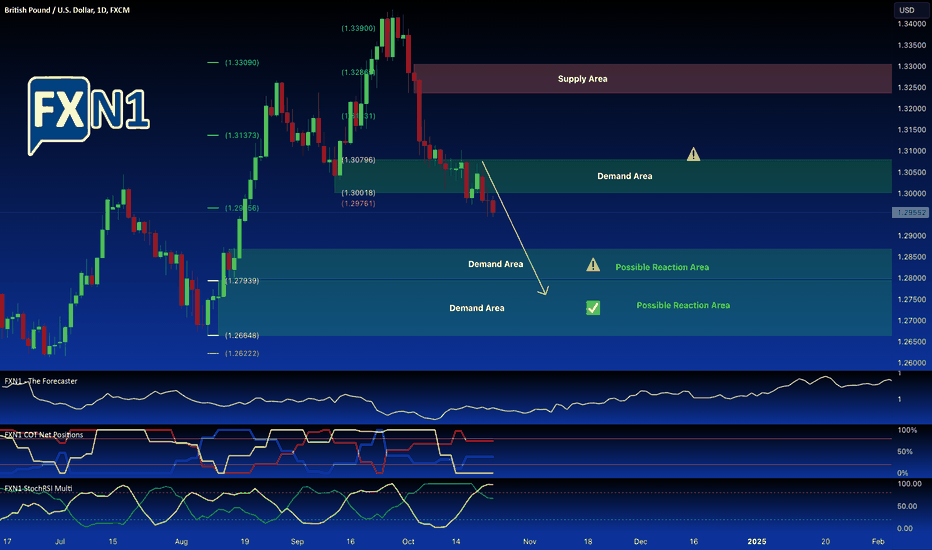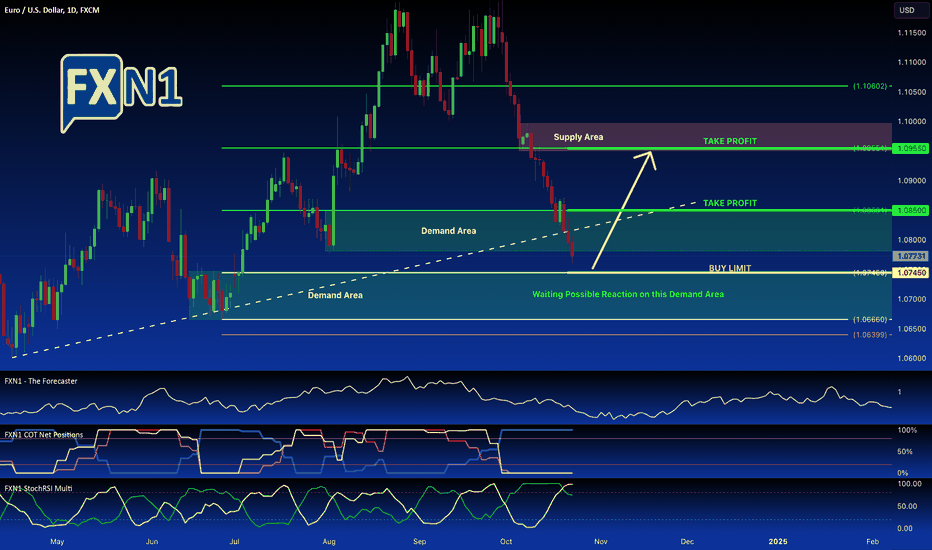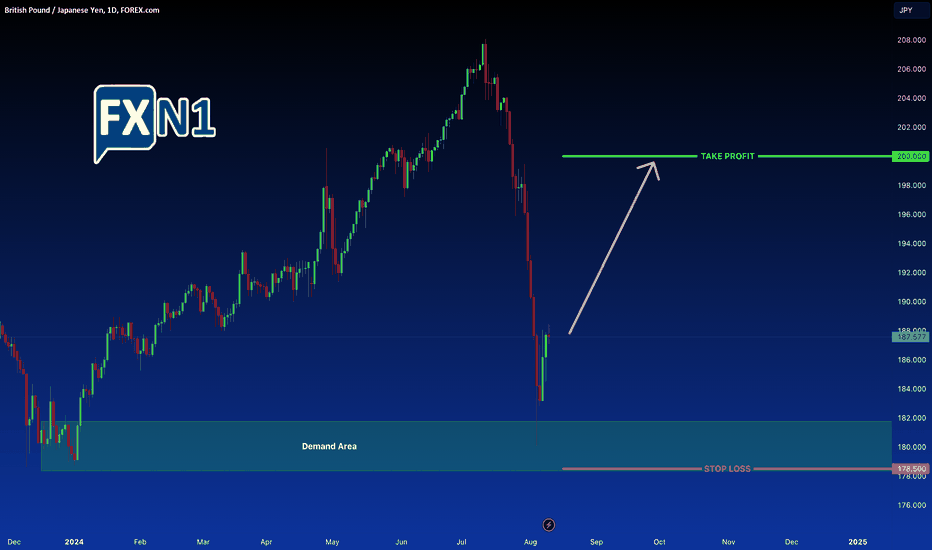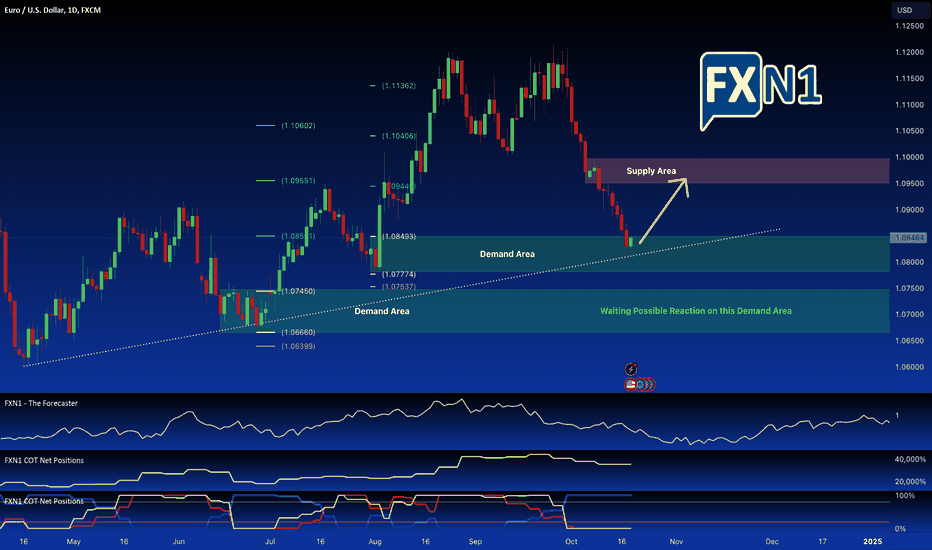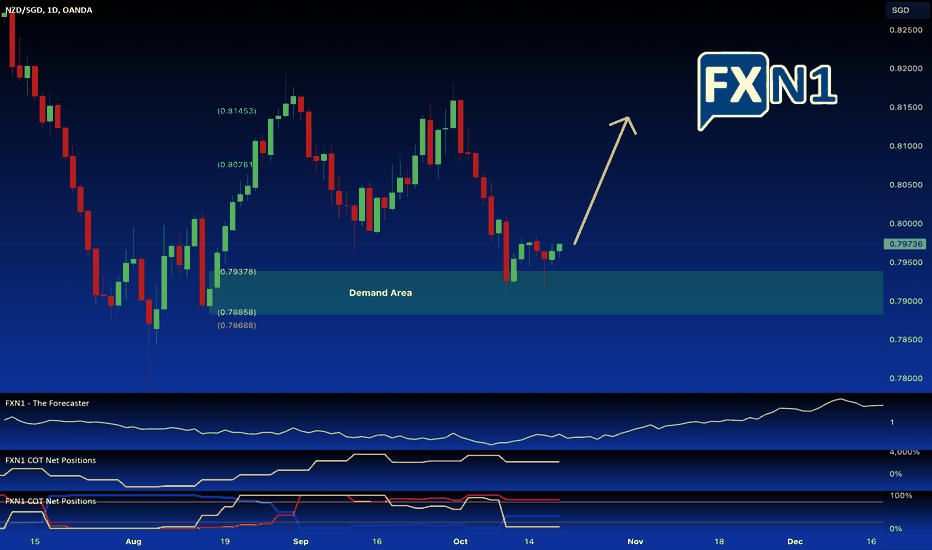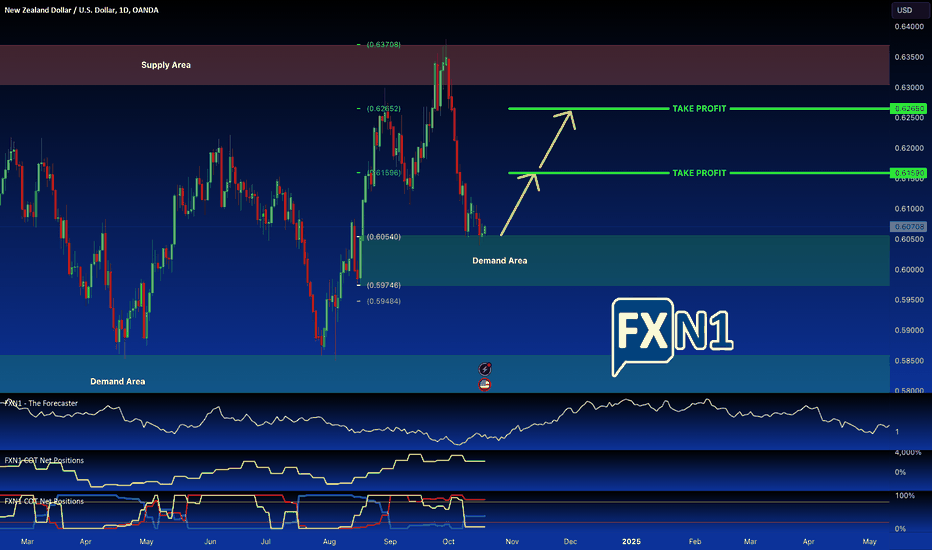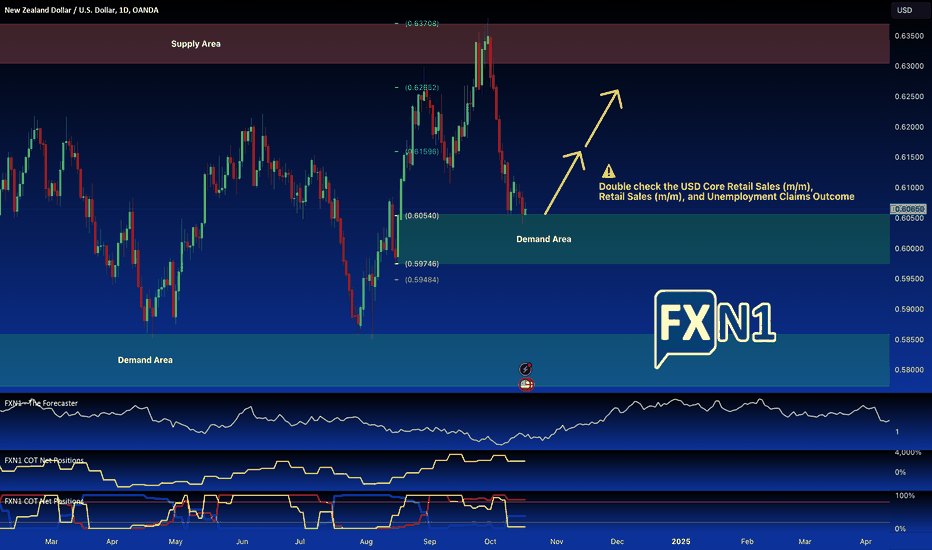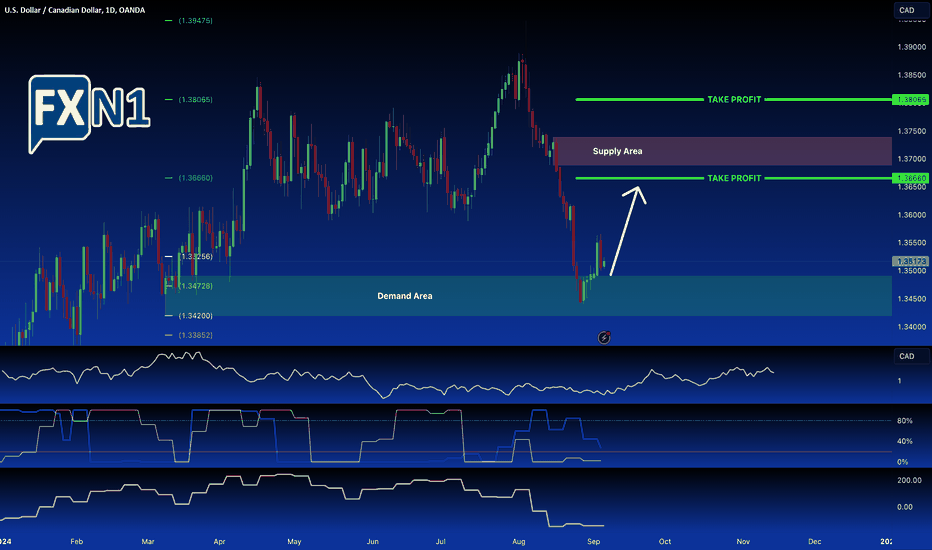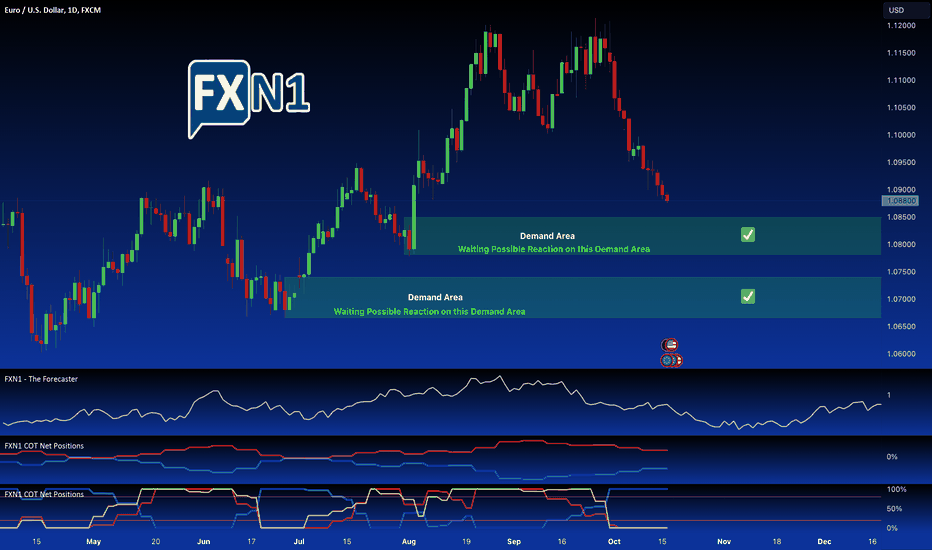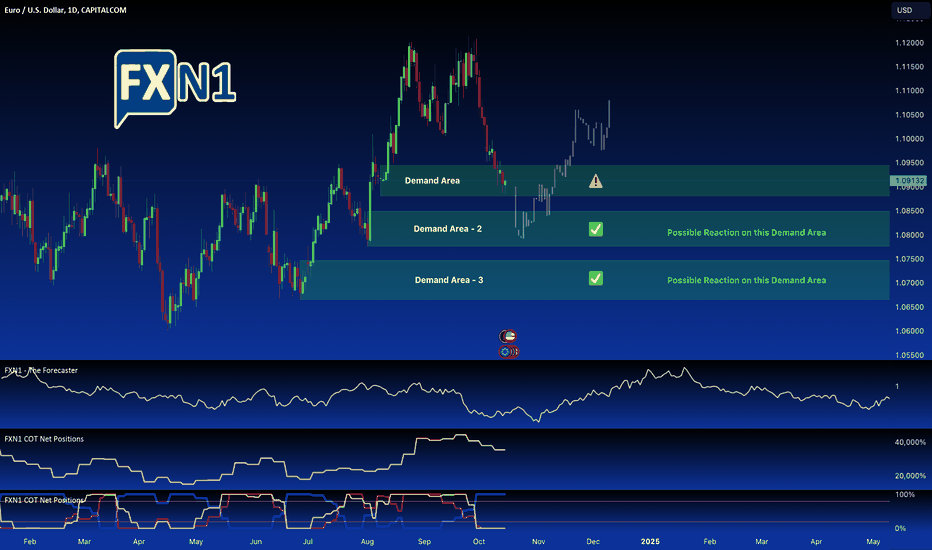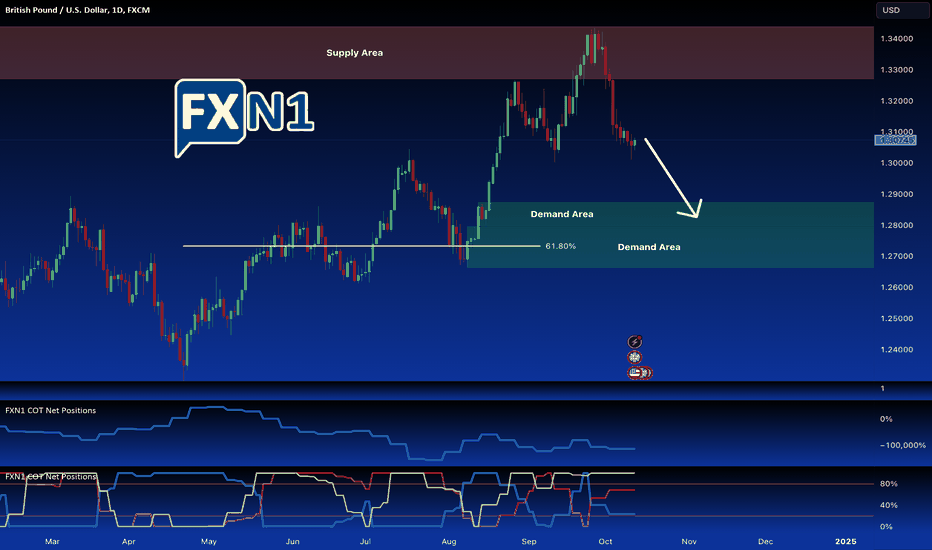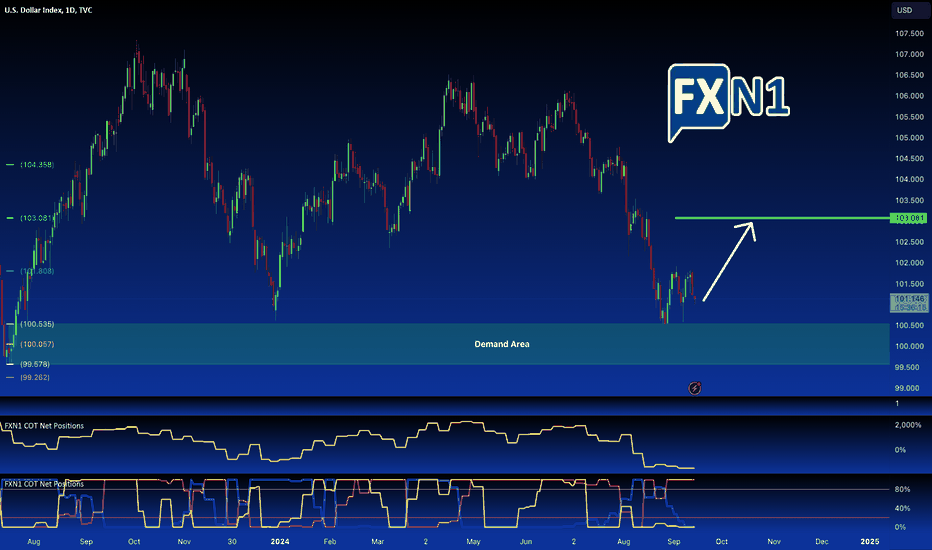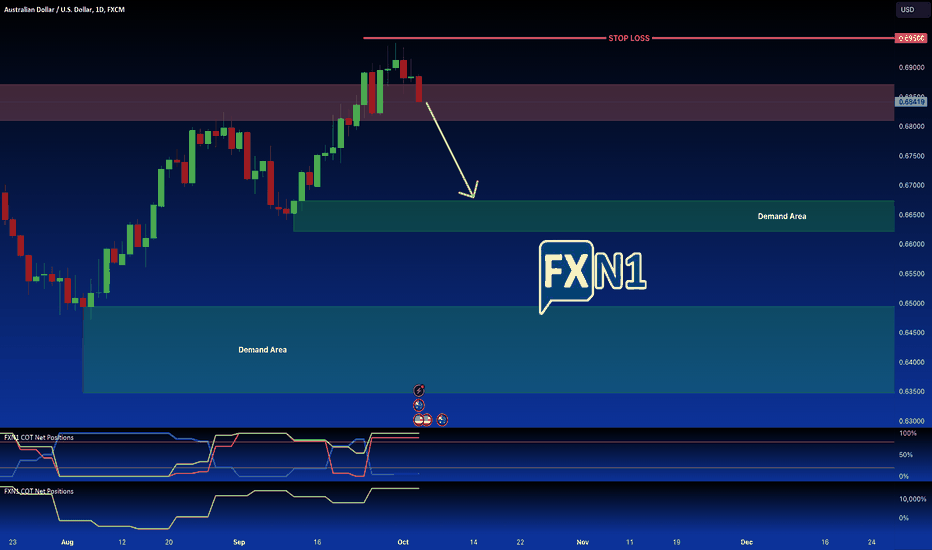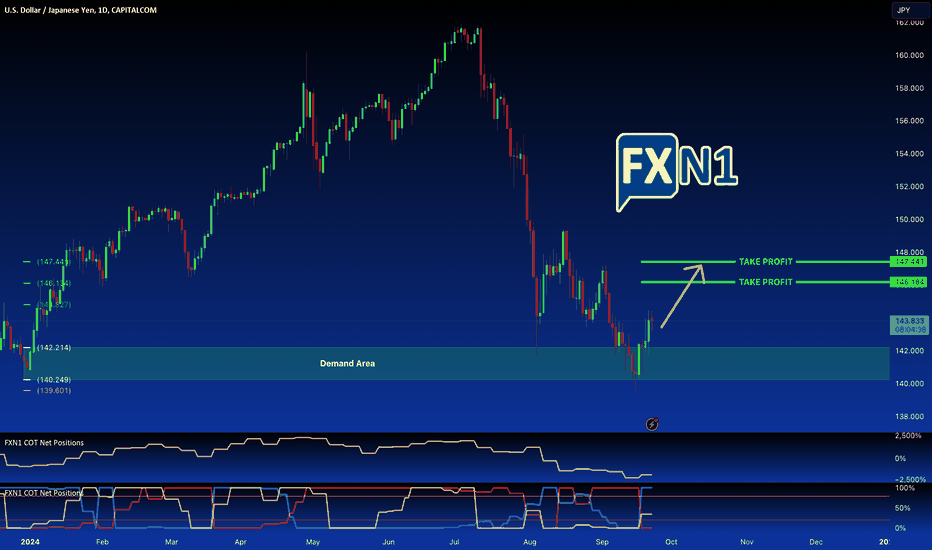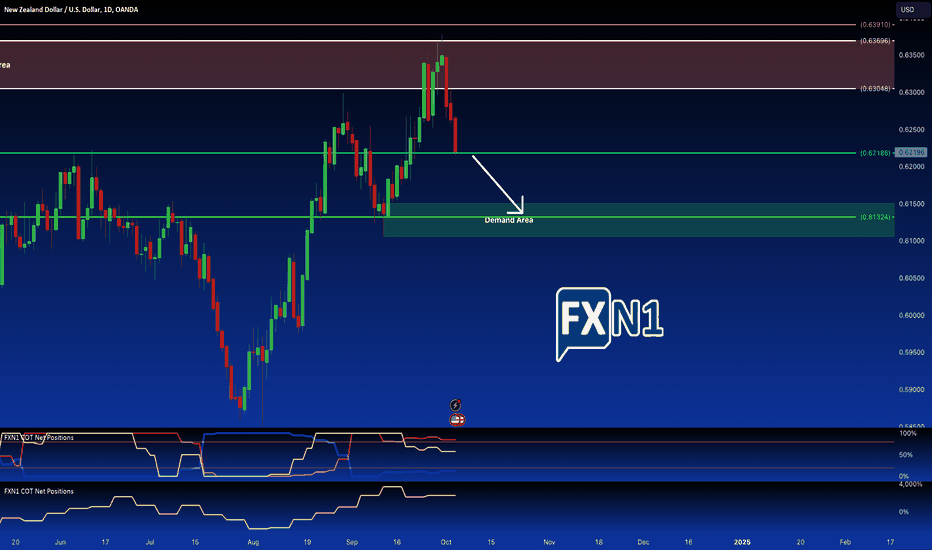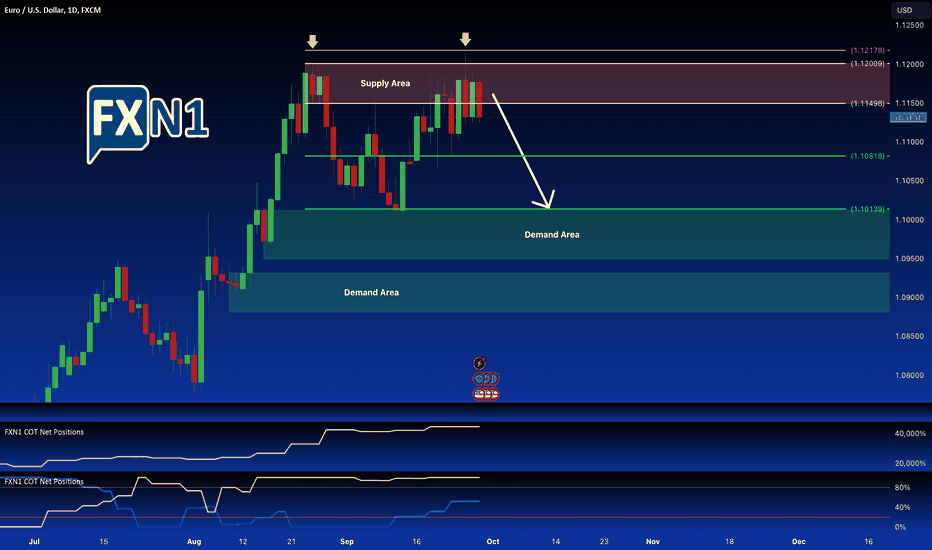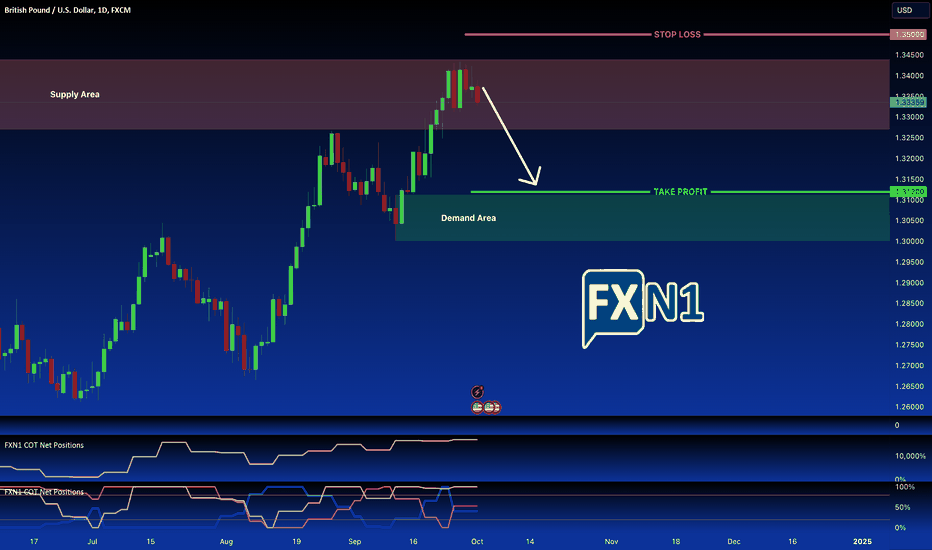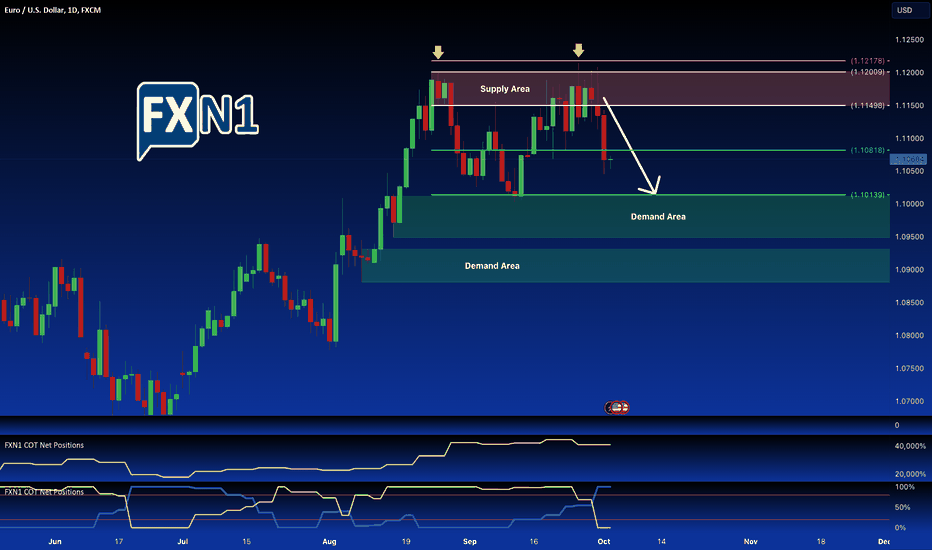GBP/USD: Pound Faces Key Test Ahead BoE Governor Bailey’s SpeechToday, all eyes will be on Bank of England (BoE) Governor Andrew Bailey, who is set to speak at an event organized by the Institute of International Finance later in the day. Bailey’s remarks could prove pivotal for the Pound Sterling (GBP), especially as the market remains sensitive to signals regarding the BoE’s stance on monetary policy.
Potential Impact of Bailey’s Speech
If Bailey adopts a dovish tone by highlighting ongoing progress in reducing inflation and does not counter market expectations for further rate cuts this year, the Pound could face immediate selling pressure.
Here’s what to watch for:
Dovish Remarks: If Bailey acknowledges progress in disinflation and hints at more accommodative monetary policy, it could reinforce expectations of further rate cuts, leading to a drop in GBP.
Hawkish Pushback: On the other hand, if Bailey suggests that the BoE is still vigilant about inflation risks and signals a less aggressive approach toward rate cuts, the Pound could find some support.
Technical Analysis: GBP/USD Eyes Lower Demand Zones
The GBP/USD pair remains under selling pressure, with our bias still tilted to the downside, consistent with our previous forecast. From a technical standpoint, the chart now features an additional mid-level demand area, where the Pound might find temporary support. Here’s how the setup is shaping up:
Current Demand Zones:
We have added an intermediate demand area in anticipation of a possible short-term reaction in the Pound. This zone could act as a buffer, offering a potential retracement opportunity before a possible continuation of the bearish trend.
COT Report Insights:
According to the latest Commitment of Traders (COT) report, retail traders remain predominantly bearish on the Pound, while institutional investors, often referred to as “smart money,” are beginning to accumulate long positions. This divergence suggests that while the broader sentiment remains bearish, there is emerging buying interest from major players, hinting at a potential reversal.
DXY Overbought Condition:
The US Dollar Index (DXY) remains in overbought territory, suggesting that its bullish momentum could be nearing exhaustion. This aligns with our outlook for a possible GBP retracement if the DXY experiences a pullback.
Bearish Bias Maintained:
Despite the potential for a short-term bounce, our overall bias remains bearish for GBP/USD. We expect the pair to continue sliding toward the lower demand area, where we will look for a more defined reversal pattern to consider a long entry.
Trading Strategy: Waiting for a Long Entry Setup
Given the current scenario, we maintain a bearish outlook for GBP/USD but will be closely watching the price action near the identified demand areas. Here’s our strategy:
Current Position: No active positions, but we remain cautious about potential short-term volatility surrounding Bailey’s speech.
Entry Plan: Should the price reach the lower demand area, we will look for a bullish reversal pattern to confirm a possible long entry.
Stop Loss: Set a tight stop loss below the demand area to manage risk effectively.
Target: Aim for a near-term rebound toward the intermediate resistance levels if a bullish setup materializes.
Final Thoughts: Potential for Short-Term Volatility
With Bailey’s speech potentially influencing the short-term direction of GBP, traders should be prepared for volatility. If the BoE Governor strikes a dovish tone, it could fuel further selling pressure on the Pound, aligning with our bearish bias. However, the overbought condition of the DXY and the building long positions by institutional traders suggest that a rebound could be on the horizon, particularly near the lower demand area.
As always, it is crucial to exercise patience and wait for clear signals before entering trades, especially in a market driven by central bank communication and evolving sentiment. Stay alert for any surprises from Bailey’s speech and be ready to adapt to changing market dynamics.
✅ Please share your thoughts about GBP/USD in the comments section below and HIT LIKE if you appreciate my analysis. Don't forget to FOLLOW ME; you will help us a lot with this small contribution.
Forexn1
EUR/USD Extends Decline Amid USD Strength and Weak Eurozone DataThe EUR/USD pair continues its downward trajectory, trading near fresh multi-week lows around the 1.0769 mark during Wednesday’s mid-European session. This decline reflects the ongoing strength of the US Dollar, fueled by a gloomy market sentiment and growing concerns surrounding the upcoming US Presidential election. Meanwhile, the Euro faces downward pressure due to lackluster local macroeconomic indicators, suggesting that the Eurozone's economic challenges persist into the final quarter of the year.
Factors Driving the EUR/USD Decline
1. US Dollar Strength
The US Dollar remains dominant, driven by risk aversion as investors seek safe-haven assets amidst increasing political uncertainty in the US. The potential impact of the presidential election has added to market jitters, with investors favoring the Greenback for its perceived stability.
Additionally, strong US economic data has reinforced the USD's bullish sentiment, suggesting that the US economy continues to outperform its European counterpart. This divergence adds further pressure on the Euro and pushes the EUR/USD lower.
2. Weak Eurozone Macro Data
The Euro struggles to gain traction, weighed down by recent disappointing economic figures from the Eurozone. The latest data indicates ongoing challenges in manufacturing and consumer sentiment, suggesting that the region's economic recovery may be faltering.
Persistent economic sluggishness in major Eurozone economies, like Germany and France, has dampened confidence in the Euro, as investors remain cautious about the currency's short-term prospects.
Technical Analysis: EUR/USD Approaches Key Demand Zone
As anticipated in our previous forecast, the EUR/USD has bypassed an intermediate demand zone and is now approaching a more robust support area at the lower level. Here are the key factors at play:
Commitment of Traders (COT) Report:
According to the latest COT report, retail traders remain heavily bearish on the Euro, while institutional investors (often referred to as “smart money”) have begun to move in the opposite direction, accumulating long positions. This shift in positioning hints at a potential turnaround as the EUR/USD nears significant demand levels.
DXY Overbought Condition:
The US Dollar Index (DXY), which tracks the performance of the Greenback against a basket of major currencies, is currently in overbought territory. This condition suggests that the USD rally could be losing steam, potentially paving the way for a EUR/USD rebound.
The technical overextension of the DXY aligns with the prospect of a retracement, providing additional support for the Euro at the upcoming demand area.
Buy Limit Setup:
With the EUR/USD nearing a critical demand zone, we are considering placing a buy limit order. This approach aims to capitalize on a potential reversal at the lower demand area, which is supported by both technical indicators and the shifting COT report dynamics.
Trading Strategy: Buy Limit on Demand Area
Given the current conditions, a buy limit order near the next demand area presents a favorable risk-reward setup. Here’s how we’re approaching this potential trade:
Entry: Set a buy limit order just above the upcoming demand zone, targeting a potential rebound in the EUR/USD pair.
Stop Loss: Place a tight stop loss below the demand area to manage risk in case of a continued slide.
Target: Aim for a near-term bounce back toward resistance levels, aligning with potential DXY weakness and institutional positioning.
Final Thoughts: Cautious Optimism for a EUR/USD Rebound
While the EUR/USD remains under pressure due to the prevailing USD strength and weak Eurozone data, technical factors and shifting market positioning suggest a potential short-term reversal. As the pair approaches a critical demand zone, a carefully placed buy limit order could offer a promising entry opportunity.
With political uncertainty in the US and a potentially overbought USD, traders should monitor upcoming data releases and market sentiment closely, as these factors could influence the timing and magnitude of a possible EUR/USD bounce. As always, risk management is crucial, especially in a volatile environment shaped by macroeconomic and geopolitical factors.
✅ Please share your thoughts about EUR/USD in the comments section below and HIT LIKE if you appreciate my analysis. Don't forget to FOLLOW ME; you will help us a lot with this small contribution.
GBP/JPY Eyes a Long Setup After Retesting 180.000 Demand AreaThe GBP/JPY currency pair has recently revisited the critical 180.000 level, which has proven to be a significant demand zone. This area has effectively absorbed the selling pressure, leading to a notable price rebound. The interaction at this level suggests that the market is recognizing this zone as a strong support, and the downtrend that previously dominated may be losing steam.
The price action at 180.000 has halted the bearish momentum, indicating that the pair might be gearing up for a reversal. As selling pressure diminishes, buyers appear to be stepping in, which could set the stage for a new bullish phase. Given the strength of the rebound, we are closely monitoring this area for a long setup, aiming for a return to the 200.000 level.
This potential bullish move is supported by the significant bounce from the demand zone, suggesting that the GBP/JPY pair may have found a solid foundation to recover from. The long setup we’re considering at this point is focused on capitalizing on the anticipated upward trajectory, as the pair stabilizes and positions itself for a climb back to previous highs around the 200.000 mark. This area could be the launchpad for a sustained recovery, offering an attractive opportunity for traders looking to ride the bullish reversal.
✅ Please share your thoughts about GBP/JPY in the comments section below and HIT LIKE if you appreciate my analysis. Don't forget to FOLLOW ME; you will help us a lot with this small contribution.
EUR/USD Pauses After Four-Day Slide as USD Rally EasesThe EUR/USD pair takes a breather on Friday, following a prolonged four-day losing streak, as the US Dollar's (USD) strong rally shows signs of slowing. The Euro attempts to stabilize after a tough week, with the pair hovering slightly higher, supported by a momentary pause in the USD’s upward momentum. Despite this pause, the outlook for the Greenback remains positive, particularly after Thursday’s encouraging US economic data, which continues to reinforce the idea of a resilient American economy.
USD Momentum Eases After Strong Economic Data
The US Dollar has experienced a robust run in recent weeks, driven by a strong economy and expectations of higher interest rates from the Federal Reserve. However, the rally took a pause on Friday, despite the release of better-than-expected US economic data. September’s Retail Sales increased by 0.4%, surpassing market forecasts, while the Initial Jobless Claims for the week ending October 11 came in lower than anticipated at 241,000, compared to an expected 260,000. These figures underscored the strength of the US labor market and consumer spending, further bolstering the Federal Reserve’s stance on maintaining elevated interest rates.
Even though the positive data continues to favor the USD, the currency’s upward trajectory has temporarily slowed, allowing the EUR/USD pair to consolidate after a sharp decline earlier in the week. This pause in the Greenback's rally offers the Euro some relief, though the broader trend remains USD-favorable in the near term.
Technical Outlook: EUR/USD Prepares for a Potential Rebound
From a technical standpoint, the EUR/USD pair is showing early signs of a potential bullish rebound. The pair has bounced from a critical demand area, suggesting that buying interest is emerging at these lower price levels. Furthermore, the Commitment of Traders (COT) report reveals a significant divergence between retail and institutional sentiment. While retail traders remain predominantly bearish, large institutional investors—commonly referred to as "smart money"—have begun to increase their long positions on the Euro. This discrepancy in positioning could signal a reversal in market direction, potentially favoring the Euro in the near term.
Seasonality patterns also support a possible recovery in the EUR/USD, as historical data suggests that the Euro tends to perform well during this period of the year. Taken together, the technical indicators and seasonal trends point toward a possible bullish setup, where traders might look to enter long positions, anticipating further upside movement.
Conclusion: EUR/USD Seeks Stability as USD Rally Temporarily Stalls
The EUR/USD pair has found some much-needed support after several days of losses, as the relentless USD rally slows down following strong US economic data. Despite the positive fundamentals supporting the Greenback, technical indicators hint that the Euro may be on the verge of a recovery. The rebound from key demand levels, coupled with institutional long positioning and supportive seasonality, suggests that the EUR/USD could be setting up for a bullish move. Traders should remain vigilant, as the pair’s next move will depend on evolving market conditions and the upcoming data releases that could further influence the direction of both currencies.
✅ Please share your thoughts about EUR/USD in the comments section below and HIT LIKE if you appreciate my analysis. Don't forget to FOLLOW ME; you will help us a lot with this small contribution.
NZD/CAD Tests Key Demand Area with Bullish Signs EmergingIn the last three days, the NZD/CAD pair has retested a crucial demand area, showing a clear rejection, which indicates potential buying interest at this level. Supporting this outlook, the Commitment of Traders (COT) report reveals that retail traders continue to hold predominantly short positions, while "Smart Money"—institutional investors—are steadily increasing their exposure to the pair. Additionally, though less significant, the price has reacted to the 61.8% Fibonacci retracement level from the swing low, adding another technical layer to the current scenario.
Large speculators have already shifted to a bullish stance, signaling growing confidence in the New Zealand Dollar (NZD) relative to the Canadian Dollar (CAD). This shift in market sentiment could pave the way for a potential long setup, especially as seasonal trends indicate further upside potential for the NZD/CAD pair.
From a technical perspective, the combination of the demand zone rejection and the bullish movement in institutional positioning suggests the possibility of an upward move. Traders will be closely observing the price action over the coming days for signs of a breakout, which could provide an opportunity to enter long positions in line with the growing bullish sentiment surrounding NZD/CAD.
✅ Please share your thoughts about NZD/CAD in the comments section below and HIT LIKE if you appreciate my analysis. Don't forget to FOLLOW ME; you will help us a lot with this small contribution.
NZD/SGD Tests and Rejects Key Demand Area, Bullish Sentiment.Over the past three days, the NZD/SGD pair has retested a previous demand area and shown a clear rejection, signaling potential buying interest at this level. The Commitment of Traders (COT) report adds weight to this scenario, revealing that retail traders remain predominantly short, while "Smart Money"—institutional investors—are beginning to edge higher in their positioning.
Large speculators have already turned bullish, reflecting a growing confidence in the New Zealand Dollar (NZD) relative to the Singapore Dollar (SGD). This shift in sentiment could set the stage for a possible long setup, particularly as seasonal trends suggest further upside potential for NZD/SGD.
From a technical perspective, the rejection of the demand zone, combined with the bullish shift in institutional positioning, points to a potential upward move. Traders will be closely monitoring price action in the coming days for confirmation of a breakout, which could present an opportunity to enter long positions in alignment with the emerging bullish sentiment.
✅ Please share your thoughts about NZD/SGD in the comments section below and HIT LIKE if you appreciate my analysis. Don't forget to FOLLOW ME; you will help us a lot with this small contribution.
NZD/USD Attracts Modest Buying on Friday Amid USD WeaknessThe NZD/USD pair has attracted some buying interest for the second consecutive day on Friday, driven by a modest weakening of the US Dollar (USD). However, the upside momentum lacks strong bullish conviction as the pair continues to hover around the 0.6071 level, close to the one-month low touched earlier this week. Despite the rebound, market sentiment surrounding the pair remains cautious, with traders awaiting further cues from both global economic developments and key technical indicators.
US Dollar Weakness Offers Relief
The primary driver behind the modest gains in NZD/USD has been the slight pullback in the US Dollar. The greenback has recently shown signs of weakening after a strong rally in previous weeks, largely supported by robust US economic data and hawkish expectations around the Federal Reserve's monetary policy. The recent downtick in the USD has provided some breathing room for risk-sensitive currencies like the New Zealand Dollar, allowing for a temporary recovery in the pair.
Technical Outlook: Demand Zone Holds Firm
From a technical perspective, the NZD/USD pair appears to have rejected a significant demand zone, suggesting that there is support for the pair at current levels. This demand area has seen increased buying interest, particularly as retail traders remain extremely short on the pair. In contrast, smart money – typically institutional investors with deeper market insights – has started to build long positions, signaling a potential shift in market sentiment.
The rejection of the demand zone and the presence of long positions from smart money traders suggest that the NZD/USD pair could be poised for further gains. This technical setup aligns with the broader seasonality patterns that indicate a potential uptrend in the coming weeks.
Seasonality and Market Sentiment: Bullish Signs Ahead?
Seasonality data, which tracks historical patterns in currency movements, shows a potential uptrend for the NZD/USD pair. This is supported by the current market positioning, where retail traders are overwhelmingly short, creating a contrarian signal for a potential rally. Smart money's shift towards building long positions adds weight to the argument that the pair may be headed for a sustained move higher.
Given these factors, we have decided to open a long position on NZD/USD, taking advantage of the technical setup, smart money movements, and favorable seasonality trends. While the overall market sentiment remains cautious, the combination of these signals offers a compelling case for a potential bullish move in the near term.
Conclusion: A Cautious Bullish Outlook
While the NZD/USD pair has attracted modest buying on the back of USD weakness, the bullish conviction remains limited for now. However, the rejection of a key demand area, coupled with the increasing long positions from smart money and favorable seasonality patterns, suggests that the pair could see further upside in the days ahead.
As always, traders should remain cautious and monitor upcoming economic data releases and market developments that could influence the pair's direction. Nonetheless, the technical and fundamental setup currently points to a potential opportunity for upside gains, and we are positioned accordingly with a long trade.
✅ Please share your thoughts about NZD/USD in the comments section below and HIT LIKE if you appreciate my analysis. Don't forget to FOLLOW ME; you will help us a lot with this small contribution.
NZD/USD Rebounds, But Caution Remains Ahead of US Economic DataThe NZD/USD pair rebounded today from a key demand area, but caution remains among traders as critical US economic data looms. The upcoming reports for USD Core Retail Sales (m/m), Retail Sales (m/m), and Unemployment Claims are expected to inject volatility into USD-correlated currency pairs, particularly affecting both EUR/USD and NZD/USD. These data points are crucial for assessing the strength of the US economy, and stronger-than-expected results could further support the US Dollar (USD), applying downward pressure on other currencies like the euro and the New Zealand Dollar (NZD).
China's Economic Data in Focus for NZD
In addition to US developments, market participants are likely to remain cautious ahead of key economic data from China, New Zealand’s top trading partner, scheduled for release on Friday. The upcoming GDP and Retail Sales figures will be closely monitored, especially after the recent disappointment in China’s CPI and PPI numbers. Weak results from China could have negative implications for the NZD, given New Zealand’s heavy reliance on trade with China.
The New Zealand Dollar has faced additional challenges, as China's recently announced fiscal stimulus measures have failed to lift market sentiment. Investors remain uncertain about the scale and impact of the stimulus package, further weighing on the outlook for the NZD.
USD Strength and Federal Reserve Outlook
Meanwhile, the US Dollar has found support from strong labor and inflation data, which has tempered market expectations for aggressive easing by the Federal Reserve (Fed). According to the CME FedWatch Tool, there is currently a 92.1% probability of a 25-basis-point rate cut in November, with little to no expectation of a larger 50-basis-point reduction. This has kept the USD resilient, further limiting the upside potential for the NZD/USD pair.
Technical Outlook and Market Sentiment
From a technical standpoint, while the NZD/USD has seen a rebound, the Commitment of Traders (COT) report reveals that retail traders remain bearish on the pair, whereas smart money has started increasing their positions. In addition, our forecast suggests a potential shift toward a bullish seasonality for the NZD, though market conditions remain uncertain.
Given the importance of today’s US economic data, we are adopting a patient approach, waiting for the news release before considering any entries. Stronger-than-expected US figures could dampen the outlook for the NZD, while weaker data may present opportunities for the NZD to regain strength.
In conclusion, while there are signs of a potential bullish trend emerging for the NZD/USD, the combination of ongoing USD strength and upcoming key economic releases from both the US and China makes it necessary to remain cautious in the near term. Patience will be key as we await further developments in the market.
✅ Please share your thoughts about NZD/USD in the comments section below and HIT LIKE if you appreciate my analysis. Don't forget to FOLLOW ME; you will help us a lot with this small contribution.
EUR/USD Extends Decline Near 1.0850 Ahead of Key Economic DataThe EUR/USD pair extended its decline during the early Asian session on Thursday, hovering around the 1.0850 mark. The continued strength of the US Dollar (USD) has added selling pressure on the euro, as investors anticipate critical developments in both Europe and the United States. Notably, the European Central Bank (ECB) is expected to announce another interest rate cut during its monetary policy meeting today, which will play a pivotal role in shaping the near-term direction of the EUR/USD.
ECB Meeting and Rate Cut Expectations
The ECB meeting is a focal point for the market, with investors widely expecting another rate cut as the central bank attempts to stimulate the sluggish Eurozone economy. The ongoing monetary easing measures aim to address inflationary concerns and support economic growth in the region. A further reduction in interest rates would likely put additional pressure on the euro, especially against a strengthening dollar. Traders will be closely watching the tone of the ECB’s announcements, looking for any clues regarding future policy direction, which could set the stage for increased volatility in EUR/USD.
US Economic Data in Focus
In addition to the ECB's decision, the market’s attention will shift to the release of key economic data from the US later today. The USD Core Retail Sales (m/m), Retail Sales (m/m), and Unemployment Claims reports are set to inject volatility into USD-correlated currency pairs, particularly EUR/USD. These reports are crucial in assessing the overall health of the US economy, and stronger-than-expected figures could further bolster the USD, applying additional downward pressure on the euro.
Retail sales data will provide insight into consumer spending patterns, a key driver of US economic growth, while unemployment claims will shed light on labor market conditions. Should the data come in stronger than anticipated, it may reinforce expectations of a resilient US economy, prompting the Federal Reserve to maintain its hawkish stance on interest rates. Conversely, weaker data could weigh on the dollar and offer a temporary reprieve for EUR/USD.
Technical Outlook: Demand Zones in Focus
From a technical perspective, the EUR/USD is currently reacting to a previously identified demand area. While the pair has experienced selling pressure, the price could see a bullish reaction if the upcoming US data or the ECB meeting provide supportive conditions for the euro. In case of a positive outcome for the EUR after the news releases, we may consider opening a long position. However, the best entry point for a long trade remains within the lower demand zone, which offers stronger support and a more favorable risk-reward setup.
The Commitment of Traders (COT) report indicates a notable shift in market positioning. Retail traders have been increasing their short positions on the euro, while smart money (large institutional investors) has moved long on the currency. This positioning dynamic suggests the possibility of a reversal, as smart money often takes contrarian positions against retail traders. With the data releases and central bank decisions looming, today could present a long setup, especially if the market interprets the news favorably for the euro.
Conclusion
The EUR/USD continues to trade under pressure, driven by the strength of the USD and expectations surrounding the ECB’s upcoming monetary policy decision. As the day unfolds, the release of critical US economic data will further shape the pair’s direction, potentially adding volatility and creating opportunities for traders. While the euro remains under pressure, technical and positioning factors indicate that a bullish setup could emerge, particularly if the euro finds support in the lower demand zones or if the news flow turns in its favor. Traders are advised to exercise caution and patience, keeping a close eye on the upcoming data releases and market reactions before entering any positions.
✅ Please share your thoughts about EUR/USD in the comments section below and HIT LIKE if you appreciate my analysis. Don't forget to FOLLOW ME; you will help us a lot with this small contribution.
USD/CAD Rebounds from Demand Zone: Bullish Continuation in SightThe USD has shown a strong and positive response to today's economic news, signaling potential for further gains. After a temporary pullback yesterday, the Dollar is now demonstrating resilience, looking ready to recover and continue its bullish movement. This performance aligns well with our previous market analysis, where we anticipated a potential surge in the USD/CAD pair. After the pair found solid support at a key demand area, it now seems primed for an upward continuation.
From a technical perspective, the rebound on the demand zone has set a solid foundation for further growth. This area has proven to be a reliable point of reversal in the past, and the pair's recent price action suggests a renewed bullish momentum could be unfolding. The USD/CAD pair’s ability to hold above this critical zone increases the probability of a sustained upward trend in the days to come.
Adding to the technical picture, the COT (Commitment of Traders) Report reflects a market sentiment that favors the USD. According to the report, large institutional players have been positioning themselves in favor of the Dollar, while retail traders appear to be on the opposite side of the trade. This divergence between the smart money and retail positions is often a key indicator of a potential continuation of the trend. As institutional traders continue to build bullish positions, the likelihood of further upward movement in USD/CAD increases.
Additionally, seasonal patterns for this currency pair are historically aligned with periods of strength for the USD during this time of year. Over the years, USD/CAD has shown a tendency to rise during similar market conditions, adding another layer of confidence to the bullish outlook. While seasonality alone is not a decisive factor, when combined with strong technical and sentiment indicators, it provides valuable insight into the market’s potential direction.
Overall, the combination of technical analysis, market sentiment, and seasonal trends suggests that the USD/CAD is in a favorable position for continued growth. Traders looking for long opportunities may find this to be an ideal setup, especially as the pair navigates through what appears to be the beginning of a bullish momentum. As always, keeping a close eye on upcoming economic data and market events will be crucial in confirming the strength of this potential trend.
✅ Please share your thoughts about USD/CAD in the comments section below and HIT LIKE if you appreciate my analysis. Don't forget to FOLLOW ME; you will help us a lot with this small contribution.
EUR/USD Extends Losses on Turnaround Tuesday as USD StrengthensAs anticipated in our previous analysis, the EUR/USD pair extended its losses on Turnaround Tuesday, breaking through a weak demand area that had little support from underlying fundamentals. The euro continued to slide as the US Dollar (USD) maintained its upward momentum, driven by a combination of economic data and market sentiment.
US Dollar Strength Backed by FOMC Minutes
The ongoing strength of the USD has been bolstered by the Federal Open Market Committee (FOMC) minutes from the September 18 meeting. The minutes revealed that a "substantial majority" of Fed policymakers supported easing monetary policy with a 50-basis-point rate cut. However, they refrained from setting a specific timeline for future cuts, leaving room for further policy adjustments based on upcoming economic data.
The hawkish undertone of the FOMC's position has given the USD additional support in recent weeks, fueling its rally against major currencies, including the EUR.
FedWatch Tool Highlights Market Expectations
According to the CME Group’s FedWatch Tool, market participants are currently pricing in an 88% probability of a 25-basis-point rate cut at the next Federal Reserve meeting. This high probability reflects growing expectations of further monetary easing, which has helped sustain the greenback’s strength.
Upcoming US Economic Data to Watch
Looking ahead, the market's focus will shift to Thursday, when the US releases key economic data, including USD Core Retail Sales (m/m), Retail Sales (m/m), and Unemployment Claims. These reports are expected to inject volatility into USD-correlated currency pairs, particularly EUR/USD, as they will offer insights into the strength of the US economy and provide further direction for the USD.
Traders will closely watch these releases to gauge the health of the US economy and its potential impact on the Federal Reserve’s future rate decisions. Strong retail sales data and lower unemployment claims could strengthen the USD further, while weaker-than-expected figures may signal the need for more aggressive monetary easing.
Market Positioning and Technical Outlook
From a market positioning standpoint, recent data shows a shift in sentiment among speculators and commercial traders. Speculators have reduced their net long positions in the EUR, indicating decreased confidence in the euro’s near-term prospects. Conversely, commercial traders have increased their net long positions, suggesting that some institutional investors believe the EUR may be undervalued at current levels.
From a technical perspective, we are closely monitoring two key demand areas on the chart. The price is nearing these zones, and we are waiting to see how the market reacts before making any decisions about entering long positions. If the price finds support at one of these demand areas, it could signal a potential reversal or retracement. However, as always, patience is crucial in waiting for confirmation before executing any trades.
Conclusion
The EUR/USD pair remains under pressure as the USD continues to dominate, fueled by expectations of further monetary easing and strong economic data. While the pair is approaching key demand areas, traders should exercise caution and wait for clearer signals before entering long positions. With Thursday's US data releases on the horizon, the markets are set for increased volatility, and these reports will likely shape the next phase of EUR/USD's direction.
✅ Please share your thoughts about EUR/USD in the comments section below and HIT LIKE if you appreciate my analysis. Don't forget to FOLLOW ME; you will help us a lot with this small contribution.
EUR/USD Starts Tuesday with a Slight Rebound BUT...The EUR/USD pair began the Tuesday session with a modest rebound after touching its lowest level since early August. The pair is currently trading around 1.09090, showing some signs of recovery, but market sentiment remains cautious as traders await key economic data releases and central bank policy announcements.
Market Sentiment and USD Resilience
On Monday, the US Dollar (USD) remained resilient against its major counterparts, thanks to the lack of significant macroeconomic data releases and a generally cautious market mood. This led to a slight decline in EUR/USD, as the greenback held its ground. With no high-impact economic reports due early this week, the USD's strength was mainly driven by investor risk aversion and uncertainty surrounding upcoming data.
Key Upcoming Data: Eurozone Focus
The focus for EUR/USD traders will shift to the upcoming Eurostat Industrial Production data for August and the ZEW Survey from Germany’s ZEW economic research institute. The ZEW Economic Sentiment Index for both Germany and the Eurozone is expected to show improvement in October, and any upside surprise could offer the Euro some support, potentially lifting EUR/USD from its recent lows.
However, investors are likely to remain cautious ahead of the European Central Bank’s (ECB) policy meeting on Thursday. With the ECB's stance still unclear, traders may hold back from making large moves until there’s more clarity on the central bank's next steps.
US Data: Thursday in Focus
While this week started quietly, Thursday is set to bring more significant economic releases, particularly from the US. Core Retail Sales (m/m), Retail Sales (m/m), and Unemployment Claims are all scheduled for release, which could provide further direction for the USD. Until then, the EUR might have some room to recover, but the overall outlook remains cautious, and further USD strength could pressure the pair lower.
Technical Outlook: Bearish Pressure Persists
From a technical perspective, EUR/USD remains within a weak demand area, which could offer a minor rebound. However, the broader trend suggests that bearish pressure could continue, pushing the pair towards lower demand levels.
The COT (Commitment of Traders) report indicates that retail traders turned short on the Euro last week, while institutional investors (often referred to as "smart money") became more bullish. This divergence suggests that the market may be searching for a more solid demand zone before any substantial retracement occurs. Our analysis points to further bearish momentum, potentially targeting the Demand Number 2 or even lower towards Demand Number 3 before the pair finds meaningful support.
Outlook and Strategy: Patience Until Thursday
At present, we are holding back on opening any positions in EUR/USD, as the situation remains uncertain, and key data releases on Thursday could significantly shift market dynamics. While the pair may see some minor gains in the short term, the outlook is still dominated by bearish sentiment. We expect more clarity following the ECB’s policy announcement and the US data releases later this week.
In conclusion, the EUR/USD's slight rebound on Tuesday provides a temporary relief, but the market remains cautious as key economic data and central bank decisions loom. Traders should remain patient and watch for stronger signals from upcoming events before making any substantial moves.
✅ Please share your thoughts about EURUSD in the comments section below and HIT LIKE if you appreciate my analysis. Don't forget to FOLLOW ME; you will help us a lot with this small contribution.
GBP/USD Recovery Stalls Amid Mixed U.S. Data but....The GBP/USD pair saw modest gains in early Friday trading after closing marginally lower on Thursday. Although there is potential for the pair to extend its recovery, our outlook remains firmly on the bearish side. Recent U.S. economic data, particularly inflation figures, has added to the complexity of market dynamics, impacting both the British pound and the U.S. dollar as traders assess the implications for future monetary policy.
U.S. Inflation and Labor Market Update
On Thursday, the U.S. Bureau of Labor Statistics released key inflation data, revealing a slight softening in the overall Consumer Price Index (CPI). Year-over-year, inflation ticked down to 2.4% in September, a small decline from August’s 2.5%. While this offered some relief to inflation hawks, the core CPI—excluding the more volatile food and energy prices—rose by 3.3% on an annual basis, higher than the market's forecast of 3.2%. On a monthly basis, core inflation increased by 0.3%, signaling persistent underlying price pressures.
Adding to the mix, the latest U.S. Initial Jobless Claims report showed a significant rise to 258,000 for the week ending October 5, up from 225,000 the previous week. This unexpected jump has revived concerns over a potential cooling in the labor market, complicating the outlook for future Federal Reserve policy. While rising jobless claims could increase the likelihood of a rate cut, persistent core inflation suggests that the Fed may hesitate to loosen monetary policy aggressively.
Technical Outlook: Bearish Sentiment Prevails
From a technical perspective, the Commitment of Traders (COT) report offers valuable insights into market positioning. The data shows that retail traders are aggressively long, while "smart money"—institutional investors—remains flat, indicating a lack of commitment to the bullish side. This divergence suggests that the broader market sentiment still leans bearish, even as the GBP/USD attempts to recover.
For now, we are holding off on opening any positions, instead waiting for a clearer opportunity to emerge. Our focus is on a possible price drop toward a key demand area, where we plan to evaluate the conditions for a potential long setup. This level would provide a more favorable risk-reward scenario to enter a position aligned with a recovery strategy.
Conclusion
While the GBP/USD has shown early signs of a potential recovery, the broader outlook remains bearish, with mixed U.S. economic data adding uncertainty to the market's direction. The softening inflation figure offers some hope for a dovish shift in the Fed's policy, but the persistently high core CPI and rising jobless claims complicate the situation. Until clearer signals emerge, our strategy is to wait for a deeper price drop toward a demand area to position ourselves for a potential rebound.
In the meantime, traders are advised to remain cautious, as volatile data releases and shifting market sentiment could lead to sudden swings in the GBP/USD pair in the coming sessions.
✅ Please share your thoughts about GBPUSD in the comments section below and HIT LIKE if you appreciate my analysis. Don't forget to FOLLOW ME; you will help us a lot with this small contribution.
DXY Index Sees Setback Amid Soft Labor and Inflation Data but..The US Dollar Index (DXY) experienced daily losses yesterday, following the release of softer-than-expected labor and inflation data. Despite these immediate setbacks, the broader outlook for the US economy remains positive, with recent indicators highlighting a level of growth that continues to exceed forecasts. The market’s reaction to the data, however, has raised questions about whether current valuations are overly optimistic.
From a technical standpoint, the US Dollar is still trading above a key supply area, where we initiated a bullish position. This level has proven to be a crucial support zone, and as long as the price remains above it, the outlook continues to favor further gains. The recent dip in the DXY may have been triggered by weaker-than-anticipated data, but the underlying strength of the US economy suggests that this could be a temporary correction rather than a reversal of the broader uptrend.
On the economic front, the US economy is still performing robustly. Recent data reveals that growth is outpacing expectations, driven by resilient consumer spending and stable industrial output. While the labor and inflation numbers may have cooled market sentiment in the short term, they are unlikely to derail the broader trend of economic expansion.
With this strong economic backdrop, we maintain our bullish stance on the US Dollar. The softer data is not enough to overshadow the ongoing strength of the US economy, and we anticipate further upside potential for the dollar in the weeks ahead. While market valuations may currently reflect some degree of optimism, the fundamental outlook supports the case for continued appreciation in the US Dollar Index.
As traders and investors weigh the short-term data against long-term trends, it is crucial to stay mindful of key technical levels and economic indicators. The recent pullback in the DXY may present an opportunity to reinforce bullish positions, particularly if the dollar continues to hold above critical support areas. Overall, we remain confident in the strength of the US Dollar and expect further gains as economic conditions evolve.
✅ Please share your thoughts about DXY in the comments section below and 👍 HIT LIKE if you appreciate my analysis. Don't forget to FOLLOW ME; you will help us a lot with this small contribution.
AUD/USD Declines Amid Geopolitical Tensions and Key Economic DatThe Australian Dollar (AUD) is trading lower against the US Dollar (USD) after key economic data released on Thursday added downward pressure to the risk-sensitive AUD/USD pair. The market is also reacting to rising geopolitical tensions in the Middle East, with risk appetite fading as concerns mount. According to the Israeli Broadcasting Authority (IBA), Israel’s security cabinet has decided to issue a strong response to a recent Iranian attack, which saw Iran launch over 200 ballistic missiles and drone strikes on Israel on Tuesday night.
This escalating conflict has weighed heavily on risk assets like the Australian dollar, as investors move toward safe-haven currencies such as the US dollar in times of geopolitical instability.
Geopolitical Tensions Drive Risk-Off Sentiment
The increased volatility in the Middle East is driving investors to reassess their exposure to risk-sensitive assets, with the AUD/USD pair feeling the impact. Rising tensions between Israel and Iran have spooked markets, dampening risk appetite and pushing traders toward safe-haven currencies like the US dollar. As geopolitical risks escalate, risk-off sentiment is likely to continue pressuring the Australian dollar, which is highly sensitive to global risk sentiment.
Key Economic Data Adds to AUD's Weakness
Adding to the AUD’s woes, the recent economic data released on Thursday has contributed to its decline against the USD. The data has underscored the challenges facing the Australian economy, with weaker-than-expected results further diminishing the currency’s appeal. In contrast, the US dollar has remained buoyant, supported by stronger economic fundamentals and hawkish expectations for the Federal Reserve.
Technical Outlook: AUD/USD Faces Further Downside
From a technical perspective, the AUD/USD pair reversed after touching a key Supply area, which aligned with our previous forecast. This reversal is consistent with the Commitment of Traders (COT) report, which shows that retail traders have aggressively increased their long positions, typically a contrarian indicator signaling further downside.
The pair is now poised for a potential continuation of the downtrend, with bears likely eyeing additional levels of support as the US dollar strengthens amid both geopolitical concerns and a favorable economic backdrop.
Conclusion: Bearish Outlook for AUD/USD
The combination of rising geopolitical tensions in the Middle East and weaker domestic economic data has placed significant pressure on the Australian dollar. As risk sentiment continues to shift away from risk-sensitive assets like the AUD, the pair is likely to experience further downside, especially if geopolitical risks escalate and the US dollar remains strong.
Traders should monitor developments in the Middle East closely, as well as any further economic data that could influence the direction of the AUD/USD pair. For now, the bearish momentum remains intact, and the pair could see continued weakness in the near term.
✅ Please share your thoughts about AUD/USD in the comments section below and HIT LIKE if you appreciate my analysis. Don't forget to FOLLOW ME; you will help us a lot with this small contribution.
EUR/USD Decline Amid Strong US Dollar Ahead of Key Economic DataAs forecasted in our previous analysis, the EUR/USD pair remains under bearish pressure, continuing its descent over the past two days, reaching around 1.09300 during the London session. The latest Commitment of Traders (COT) report indicates that retail traders remain bullish on the pair. Despite this, the price is approaching one of the two demand areas we've identified, though we are currently awaiting a possible bullish impulse if the price drops to the lower demand zone.
US Dollar Strength and Market Sentiment
Meanwhile, the US Dollar (USD) remains near its highest level since mid-August as traders have adjusted their expectations regarding a potential 50 basis points (bps) rate cut by the Federal Reserve (Fed) in November. The likelihood of such a cut has been largely priced out, with current market sentiment suggesting a 20% chance that the Fed will keep rates unchanged at its next meeting. This expectation was reinforced by the hawkish tone in the FOMC minutes released on Wednesday, which underpinned the USD's strength.
DXY ( USD ) Daily Chart
The elevated yield on the 10-year US Treasury bond, which remains above the 4% threshold, continues to support the US Dollar, acting as a headwind for the EUR/USD pair. The stronger USD, coupled with market sentiment around potential Fed actions, has weighed heavily on the Euro in recent sessions.
Upcoming Economic Data and Market Impact
Today brings several important economic releases that could inject volatility into the market, including:
Core CPI (Consumer Price Index)
CPI y/y
CPI m/m
Unemployment Claims
These reports are key indicators of inflation and employment in the United States, and they could shift the market's outlook for the US Dollar. Currently, the forecasts suggest that the data may work against the USD, potentially leading to an initial bullish move in EUR/USD. However, the ultimate impact will depend on how closely the actual data aligns with expectations.
Our Strategy: Waiting for a Key Demand Support
At this time, we are not opening any positions as we await the price to reach the lowest demand support level. A potential bullish reversal may occur once this level is tested, and we’ll be closely monitoring market movements following today's key economic data releases. Patience remains essential as we look for confirmation of a potential bullish setup.
Conclusion
The EUR/USD pair continues its downward trend, driven by USD strength amid expectations of steady interest rates from the Federal Reserve. As key economic data is released today, we anticipate increased market volatility, which could present trading opportunities. For now, we are waiting for the pair to reach critical demand levels before considering any new positions. Stay tuned for further updates as we continue to monitor market developments.
✅ Please share your thoughts about EURUSD in the comments section below and HIT LIKE if you appreciate my analysis. Don't forget to FOLLOW ME; you will help us a lot with this small contribution.
USD/JPY Poised for Gains as DXY StrengthensThe US Dollar Index (DXY) continues its upward momentum as Treasury yields recover from recent losses, bolstering the Greenback’s strength. However, this rally may soon face headwinds, with growing market expectations of additional rate cuts by the US Federal Reserve (Fed) in 2024.
Traders are now focusing on the upcoming US Flash Manufacturing PMI, which is due for release within the hour. The PMI data will offer a fresh perspective on the health of the US manufacturing sector, and any surprise in the numbers could influence the Greenback’s near-term trajectory. The Manufacturing PMI is expected to show a slight improvement, reflecting stabilizing economic conditions, but traders remain alert for any deviations from the forecast.
According to the CME FedWatch Tool, there is a 50% probability that the Fed could reduce rates by as much as 75 basis points, bringing the federal funds rate to a range of 4.0-4.25% by the end of the year. This potential easing has kept some investors cautious, as it could curb the USD’s long-term gains.
From a technical standpoint, we are seeing a key opportunity in the USD/JPY pair, which has rebounded from a strong demand area. The latest Commitment of Traders (COT) report shows that retail traders are still heavily short on the USD/JPY, while institutional "smart money" appears to be shifting its stance, reducing its bearish exposure. This setup aligns with our previous analysis, where we highlighted the potential for a long position as the pair regains upward momentum.
As the USD/JPY continues to rebound from this demand zone, the conditions remain favorable for a long trade. The shift in sentiment among institutional traders, combined with the recovery in Treasury yields and the strength of the DXY, supports the case for further upside. However, traders should remain cautious as the Fed’s rate cut expectations may still influence broader USD sentiment in the months ahead.
For now, the focus remains on the US PMI release and its impact on both Treasury yields and the USD. Should the data come in stronger than expected, it could provide additional fuel for the DXY’s rally, further reinforcing the bullish outlook for USD/JPY. Conversely, weaker-than-expected PMI data could reignite concerns about the Fed’s dovish outlook, potentially pausing the Greenback's current rally.
We continue to monitor the situation closely, with a bullish setup in USD/JPY remaining a key focus in the near term.
✅ Please share your thoughts about USD/JPY in the comments section below and 👍 HIT LIKE if you appreciate my analysis. Don't forget to FOLLOW ME; you will help us a lot with this small contribution.
NZD/USD Bears Eye Deeper Correction Amid Positive US JOLTS ReporThe NZD/USD pair continues its bearish trajectory following the release of strong US JOLTS Job Openings data yesterday. This has intensified market speculation about the resilience of the US labor market, which could lead to further tightening by the Federal Reserve. As a result, the Kiwi dollar has come under pressure, with bears targeting a deeper correction.
In our previous forecast:
we highlighted the potential for a drop after NZD/USD encountered strong resistance in a key supply zone. The price has continued its downward momentum, confirming our analysis, and the Commitment of Traders (COT) report further supports a bearish continuation, with commercial hedgers reducing their long positions. The market dynamics show potential for the trend to reach our second take-profit target.
Fundamental Outlook: Labor Market Signals Weigh on Kiwi
The US JOLTS report, showing unexpectedly high job openings, signals strength in the labor market. This is significant because robust employment data often leads to increased expectations for tighter monetary policy from the Federal Reserve. As the central bank looks to combat inflation while maintaining economic stability, positive labor indicators like these reinforce the likelihood of interest rates remaining elevated for an extended period.
On the New Zealand side, a mixed economic outlook and weakening demand for riskier assets have further pressured the NZD. With inflation in check but economic growth showing signs of stagnation, the Reserve Bank of New Zealand (RBNZ) is not expected to be as aggressive as the Fed in future monetary policy moves. This policy divergence creates a favorable environment for NZD/USD bears.
COT Report Signals Further Downside
The COT report confirms that the institutional market is shifting towards further bearish positions in NZD/USD. Commercial traders have been reducing their long exposure, while speculators are increasingly taking short positions. This sentiment, combined with the technical rejection in the supply area, suggests that the trend is far from over.
Key Data to Watch: US Unemployment Claims
Today, traders will be closely watching the release of **US Unemployment Claims** data. If the numbers come in better than expected—indicating a stronger labor market—this could further bolster the US dollar and drive NZD/USD lower. A positive surprise in the data would support the case for the Fed to maintain its current stance on interest rates, thus enhancing the bearish outlook for NZD/USD.
Technical Analysis: Deeper Correction in Sight
Technically, the NZD/USD remains under pressure after its rejection at the supply area. The price is trending below key moving averages, and momentum indicators show bearish divergence, suggesting that the downside momentum is still strong. A break below the recent low could open the door for further losses.
In conclusion, NZD/USD bears are firmly in control, and with favorable economic data from the US, a deeper correction seems likely. Traders should keep an eye on today’s Unemployment Claims report for further clues on the pair’s direction.
✅ Please share your thoughts about NZD/USD in the comments section below and HIT LIKE if you appreciate my analysis. Don't forget to FOLLOW ME; you will help us a lot with this small contribution.
EUR/USD Faces Pressure as USD Strengthens Ahead of US PCE DataThe EUR/USD pair experienced selling pressure on Friday, reversing part of the gains made in the previous session. The US Dollar (USD) found renewed strength as traders repositioned ahead of the release of the US Personal Consumption Expenditure (PCE) Price Index, a key measure of inflation that could influence the Federal Reserve's policy outlook.
This USD rebound played a significant role in dragging the EUR/USD lower, especially as the Euro approached a critical technical zone. The pair retested a supply area, forming a potential Double Top pattern a classic indicator of weakening momentum and an early sign of a bearish reversal. This technical setup suggests that the recent bullish move might be losing traction.
Moreover, the latest Commitment of Traders (COT) report shows that retail traders are heavily bullish on the Euro. This often signals a contrarian opportunity, as extreme retail sentiment can precede a market reversal, with institutional traders typically positioning themselves in the opposite direction.
With both technical and sentiment indicators aligning, we are anticipating a retracement in the EUR/USD pair. The current USD strength, coupled with a bearish chart pattern and aggressive retail optimism, supports the likelihood of a pullback in the near term. The release of the PCE inflation data could act as a catalyst, potentially increasing market volatility and applying additional pressure on the Euro.
In summary, we expect the EUR/USD to face further downside risks as the USD gains traction. The technical setup and market sentiment suggest that the pair could retrace from current levels, especially if the upcoming US inflation data favors continued USD strength. We remain cautious and are watching for opportunities to position for a retracement.
✅ Please share your thoughts about EUR/USD in the comments section below and HIT LIKE if you appreciate my analysis. Don't forget to FOLLOW ME; you will help us a lot with this small contribution.
EUR/USD Decline, USD Gains Momentum as Strong Job DataThe US labor market continues to exhibit strength, bolstering the US dollar as recent data beats expectations. The US JOLTS Job Openings report, released on Tuesday, showed a surprising increase of 329K job openings, rising from a revised 7.711 million in July to 8.040 million in August. This unexpected surge reinforces the resilience of the US economy, providing near-term support to the US dollar. Additionally, today's ADP private sector survey reported that 143K jobs were added in September, exceeding the 120K forecast, while August's reading was revised upward from 99K to 103K.
These positive labor market signals have intensified the dollar's bullish momentum, particularly against the euro. As we previously forecasted for EUR/USD, the price rejected our key Supply area and has already reached the first take-profit target. With the pair edging closer to our second target, the US dollar's strength looks set to drive EUR/USD lower, with the next potential support sitting at the 1.09500 area.
Strong US Labor Data Drives Dollar Higher
The JOLTS and ADP reports reflect the robustness of the US labor market, providing the Federal Reserve with more room to maintain higher interest rates. With job openings and private sector employment both outperforming expectations, market sentiment is increasingly favoring the US dollar as investors anticipate the Fed may continue its hawkish stance.
The surge in job openings suggests that demand for labor remains high, which could keep inflationary pressures elevated and justify further rate hikes or prolonged tight monetary policy. Likewise, the ADP data highlights sustained private-sector job growth, reinforcing the overall strength of the labor market and lending further support to the greenback.
EUR/USD Under Pressure: Aiming for 1.09500?
On the technical front, EUR/USD remains under pressure after rejecting the Supply area as anticipated in our earlier forecast. The pair has already hit the first take-profit level, and further downside appears likely if today's US Unemployment Claims report comes in better than expected. A less severe unemployment figure compared to the forecast would strengthen the dollar further, pushing EUR/USD toward the 1.09500 support zone.
The pair has been trending lower due to a combination of strong US economic data and a weaker euro, as the European Central Bank (ECB) takes a more cautious approach to monetary policy. This divergence between the Fed and the ECB has weighed heavily on the euro, and with US data continuing to outperform, the trend could persist in the near term.
Key Data to Watch: US Unemployment Claims
Today, the market will focus on the release of US Unemployment Claims data, which could further influence the direction of EUR/USD. Should the report come in better than forecast, indicating a continued decline in unemployment, the dollar would likely strengthen further, pushing the pair closer to the 1.09500 mark.
In conclusion, the combination of strong US labor data and hawkish expectations for the Federal Reserve is fueling dollar strength, pressuring EUR/USD lower. If today's unemployment claims report aligns with the recent positive trend in US employment, a continuation of the bearish momentum could drive the pair to our next target. Traders should watch the unemployment claims release for further confirmation of this downward move.
✅ Please share your thoughts about EUR/USD in the comments section below and HIT LIKE if you appreciate my analysis. Don't forget to FOLLOW ME; you will help us a lot with this small contribution.
GBP/USD Faces Downside as Supply Zone Signals Possible ReversalThe GBP/USD pair is trading with a mild negative bias near 1.3370 during Tuesday's London session, as the British Pound (GBP) struggles to gain momentum. Comments from Bank of England (BoE) policymaker Jonathan Greene have raised concerns about potential price pressures, with Greene noting that strong UK consumer spending could further fuel inflation. This has kept the pair under pressure, especially after encountering a key supply area last week, where the price now seems poised for a possible reversal.
At the same time, less dovish remarks from Federal Reserve (Fed) Chair Jerome Powell have provided support for the US Dollar (USD), dragging the GBP/USD pair lower. Powell’s comments, hinting at a more cautious approach to rate cuts, have boosted the Greenback, creating headwinds for the Pound.
Investors are now bracing for the release of the US September ISM Manufacturing Purchasing Managers Index (PMI) data later today, as well as speeches from Fed officials Raphael Bostic and Lisa Cook. These events are likely to provide further insights into the Fed’s future policy direction and could impact the pair's next move.
From a sentiment perspective, the Commitment of Traders (COT) report reveals that retail traders remain extremely bullish on the GBP/USD pair, while larger institutional players are adopting a more cautious stance. This divergence in sentiment could signal a potential shift, with smart money seemingly positioning for a reversal rather than continuing the bullish trend.
Technically, the pair is struggling to break past the supply zone identified last week, indicating a possible downward correction. If the GBP/USD fails to hold above 1.3370, the pair could see further losses, especially if the upcoming US data supports the Greenback.
In conclusion, GBP/USD faces downside risks in the near term as investors weigh the impact of potential price pressures in the UK and a strengthening US Dollar. With key economic data and Fed speeches on the horizon, the market is preparing for possible volatility. Retail traders remain bullish, but caution from institutional players suggests a reversal could be on the horizon. Traders should closely monitor the supply area for signs of a sustained bearish move.
✅ Please share your thoughts about GBP/USD in the comments section below and HIT LIKE if you appreciate my analysis. Don't forget to FOLLOW ME; you will help us a lot with this small contribution.
GBP/USD Pulls Back as USD Strengthens Ahead of Core PCE DataThe GBP/USD pair edged lower during the Asian session on Friday, retreating from the highest levels it had reached since March 2022, around the 1.3435 region, which was touched the previous day. The decline was largely driven by a technical reversal after the pair tested a key daily supply-demand zone. This move coincides with data from the latest **Commitment of Traders (COT) report**, which shows that retail traders remain strongly bullish on the GBP.
Despite the bullish positioning from retailers, the pair saw a pullback as the market anticipates important economic data out of the United States, including the **Core PCE Price Index** for the month of November. A positive reading from this inflation gauge could add further support to the US Dollar (USD) and push the GBP/USD pair lower. The USD is expected to strengthen if the data signals persistent inflationary pressures, which could keep the Federal Reserve cautious about loosening monetary policy too quickly.
However, expectations regarding the Bank of England (BoE) are playing a counterbalancing role. The BoE is widely seen as taking a more gradual approach to cutting rates compared to the US Federal Reserve, which could help support the British Pound (GBP) in the medium term and limit losses for the GBP/USD pair. Still, with immediate market momentum and potential upside for the USD, the pair remains under pressure in the short term.
In light of these developments, we are maintaining a **short position** on GBP/USD, as the combination of technical resistance and USD strength points to further downside in the near future. While GBP sentiment remains supported by BoE policy expectations, today's price action suggests that USD demand is likely to drive the pair lower, especially with key data releases on the horizon.
✅ Please share your thoughts about GBP/USD in the comments section below and HIT LIKE if you appreciate my analysis. Don't forget to FOLLOW ME; you will help us a lot with this small contribution.
EUR/USD Extends Losses as USD Strengthens, Bearish Impulse FocusThe EUR/USD pair has extended its decline for a third consecutive day, falling in line with our previous forecast. The US Dollar (USD) has gained traction, supported by a risk-off market sentiment and recent comments from Federal Reserve (Fed) Chair Jerome Powell. On Monday, Powell downplayed expectations of a significant 50 basis points (bps) rate cut, indicating that the central bank is not in a hurry to lower rates aggressively. His cautious tone has further bolstered the Dollar, keeping pressure on the Euro.
From a broader perspective, the main scenario for EUR/USD remains unchanged from what was outlined in previous analyses. We are still looking for a potential new bearish impulse, particularly as markets anticipate the release of the ADP Non-Farm Employment Change report later today. This key economic indicator could further influence the pair’s movement, with stronger-than-expected data likely boosting the USD and pushing the EUR/USD lower.
Technically, the pair is approaching our second take profit target as the bearish momentum continues. The current outlook suggests further downside potential, especially if today’s ADP report supports the case for a resilient US labor market, reinforcing the strength of the USD.
In conclusion, with the EUR/USD pair continuing its downward trend and the USD benefiting from Powell’s cautious stance, we anticipate further bearish action. The release of the ADP Non-Farm Employment Change report today could provide the catalyst needed to reach our second take profit target. Traders should remain vigilant, as the bearish scenario is still in play and could gain momentum following today’s data.
✅ Please share your thoughts about EUR/USD in the comments section below and HIT LIKE if you appreciate my analysis. Don't forget to FOLLOW ME; you will help us a lot with this small contribution.
